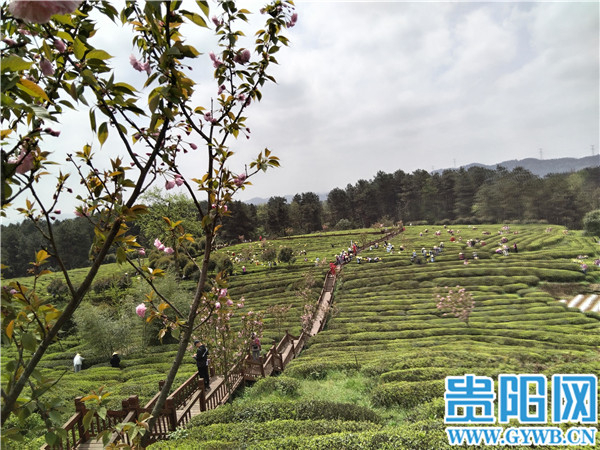Kaiyang tea gardens recognized for cultural, tourism integration

A view of the tea gardens in Kaiyang county [Photo/Guiyang network]
Two tea gardens in Kaiyang county in Guiyang, the capital city of Southwest China's Guizhou province, were recently recognized as some of the top 10 tea gardens in the province for their integrated development of culture and tourism.
They are the Yunshan Chahai tea garden and the Nangonghe tea garden, respectively.
This recognition makes Kaiyang county the only place to have two or more tea gardens to make this list.
The Yunshan Chahai tea garden is located in Hefeng township of Kaiyang county. It has more than 5,000 mu (333.33 hectares) of sightseeing tea gardens and its tourism service infrastructure covers over 20,000 square meters.
By leveraging its natural and cultural advantages, it provides selenium-rich food, tea garden scenery, farming culture and tea culture experiences, homestays, annual dinner meetings, conference receptions, health care services, and other special service items.
The Nangonghe tea garden is 30 km away from Guiyang city and 40 km away from Kaiyang county.
It currently has 3,800 mu of ecological sightseeing tea gardens. Its tea making workshops and handmade tea experience workshops cover an area of 2,000 sq m, while its affiliated parking lot is 20,000 sq m.
The Nangonghe tea garden has always adhered to green, ecological, healthy, and organic development concepts. It also provides five major services involving tea production, research services, outdoor training, homestays, and tourism.
At present, the integration of tea and tourism has not only become a new form of tourism in Guizhou, but has also become a breakthrough in the development of culture and tourism in Kaiyang county.
Last year, Kaiyang county built tea gardens to the measure of 170,300 mu, and put nearly 160,000 mu of that total into production.
These tea gardens have achieved an annual dried tea output of 10,500 metric tons and an annual output value of more than 2 billion yuan ($287.78 million).
Moreover, Kaiyang has built five professional tea townships, each with tea gardens measuring more than 10,000 mu, and 15 professional tea villages each with tea gardens measuring more than 5,000 mu. All of which has effectively promoted agricultural efficiency while also increasing the income of farmers.
Presented by China Daily.
黔ICP备05001922号-3
